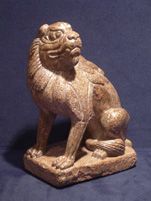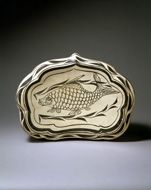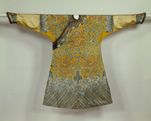 | Nature has always played an important rol in Asian art and especially in China and Japan, where it became more than a source of inspiration, gaining a spiritual and religious importance. Chinese artists, even from the ancient times, turned to nature for their ambitious compositions, always trying to capture much more than the mere representation of the reality. |
The Bruce Museum in Greenwich, USA, is hosting until September 9 an exhibition dedicated to Chinese artistic symbolism, focusing on the presence of animals and flowers in Chinese decorative art, from ancient creations to Medieval compositions. Most of the works on display, ranging from textiles to porcelain, jade, enamel, ivory and metal works come from the museum's rich collections, the remaining few being loans from important private collectors.
Despite the fact that the Chinese artists are famous for their approach and creations in the field of ceramics, this exhibition shows that virtually every medium used in the field of decorative arts was treated with equal skill and talent. Also, visitors have the chance of discovering and understanding the techniques and themes, making links between the design elements and decoding the symbols that appear frequently. It is fascinating to see how the design ideas and techniques are used in one or another medium, with a great deal of innovation and creativity, as each medium proved to be a challenge to the artisans.
|  |
 | The main subjects, which involved animals and plants, were drawn from myths, religious stories and ancient literature, and the Chinese masters of art had thus a wide range of choice, managing to create a visual language which not only served for decorating objects, but also to gave them life. In Chinese popular culture the artist was much more than an artisan, and those who were trully talented were regarded as inspired by the gods. |
The exhibition at the Bruce Museum in presenting an impressive art world, rather unknown by Western audience.
Photo : brucemuseum.org
2007-07-30

































